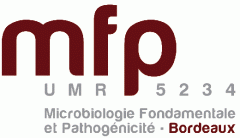
Trypanosoma parasites and the cytoskeleton
The unicellular parasite Trypanosoma brucei is the causative agent of human African trypanosomiasis (sleeping sickness) that threatens tens of millions of people in nearly 40 sub-Saharan countries. T. brucei belongs to the class Kinetoplastida, which also includes the other important human pathogens T. cruzi (causative agent of Chagas disease) and Leishmania sp (leishmaniasis disease). Currently, there is no vaccine for any of these diseases and treatments are complex and difficult and in many cases dependent on the use of compounds that were discovered many years ago and are often extremely toxic. Despite recent progress in the battle against these diseases, continued research into the basic biology of these pathogens is necessary for the identification of new diagnostic and therapeutic angles.
Recent work on nanobodies can be watched here.
During the T. brucei cell cycle, organelle positioning and segregation show a high degree of coordination and control. As such, T. brucei is a highly polarised cell with the transition zone of the flagellum present inside an invagination of the pellicular membrane called the flagellar pocket (FP). The FP is the only place for endocytosis and exocytosis. The FP is maintained around the flagellum by the flagellar pocket collar (FPC). We have shown that the FP is essential for the survival of the parasite and we identified the first FPC component, BILBO1, and showed that it is essential for the biogenesis of the FP and the FPC. More recently, we have identified several BILBO1 protein partners that are unique to the parasite and their function is not known. However, recent data indicate a role in the interaction with BILBO1 and the cytoskeleton. The functional characterisation of these proteins is carried out with reverse genetics (RNA interference), phenotype analysis during overexpression or deletion, identification of functional domains (mutagenesis, yeast-two-hybrid, heterologous system) and electron and light microscopy. In collaboration with structuralists, the interaction domains between BILBO1 and partners are studied to identify molecules able to block this interaction.
T. brucei is also an excellent model for studying proteins involved in the biogenesis, structure and function of mammalian cilia and flagella, and mutant proteins involved in male infertility.
Toxoplasma gondii and its basal pole structure and function
This project is led by Dr Karine Frénal.
More recently, we started to work on another unicellular parasite, Toxoplasma gondii. This obligate intracellular pathogen infects chronically nearly one third of the human population. It belongs to the phylum Apicomplexa, which also includes other important human pathogens such as Plasmodium, the malaria causing agent, or Cryptosporidium, a leading cause of severe pediatric diarrhea. These parasites exhibit an atypical cytoskeleton organized around a membranous structure named “inner membrane complex” (IMC) and composed of flattened sacs, and a meshwork of intermediate filament-like proteins, which connects the plasma membrane to the cortical microtubules. The cytoskeleton is central in the biology of Apicomplexans, being critical for their replication, motility, integrity, and infectivity. Yet, little is known about its biogenesis and composition. We are currently investigating the contribution of cytoskeletal elements to the cellular organization and division of T. gondii tachyzoite. This parasite is a well-suited model for the phylum being one of the most genetically and biochemically tractable and also observable by different microscopy techniques thanks to numerous markers available.
